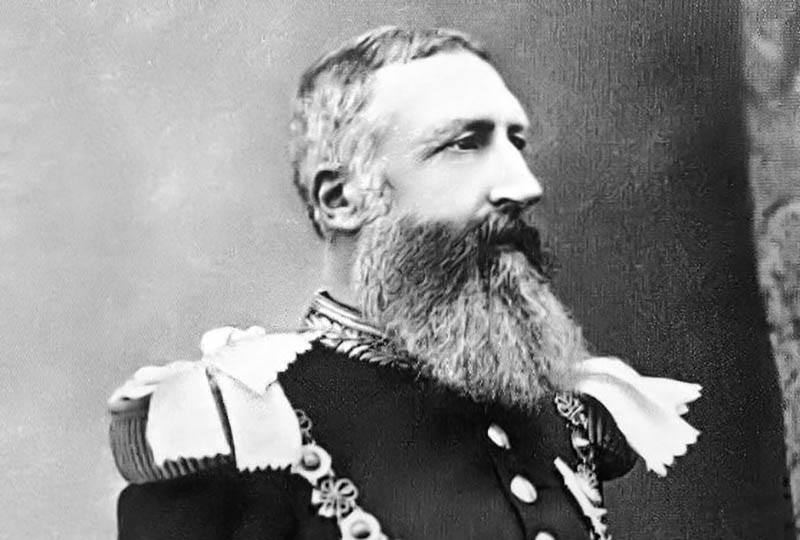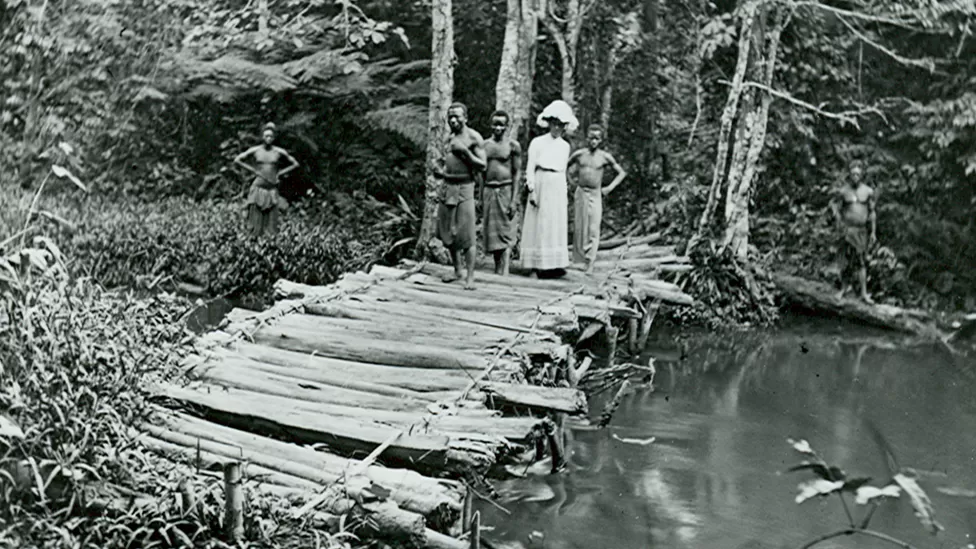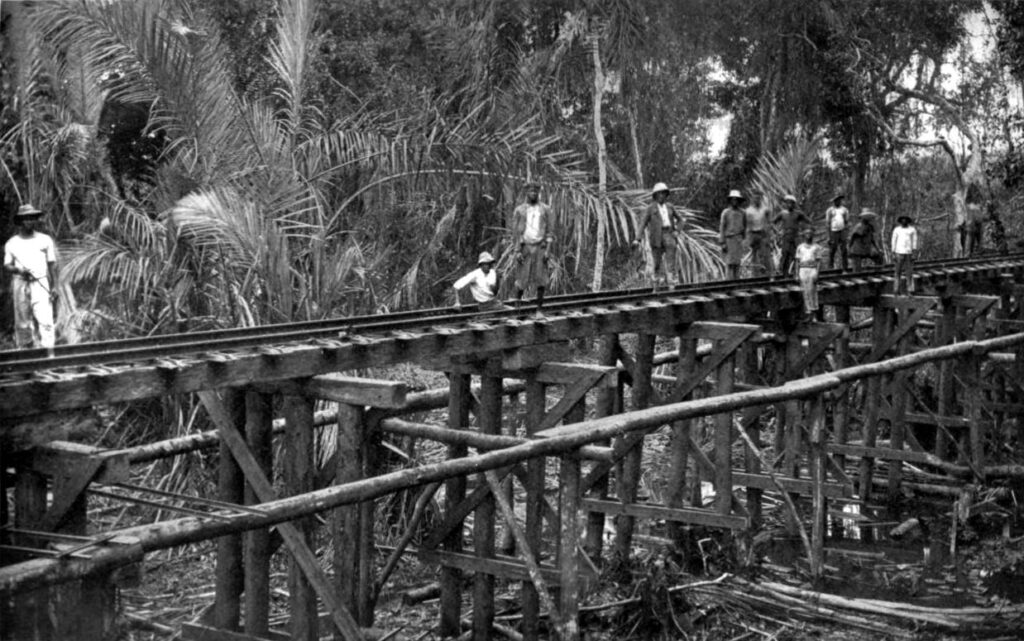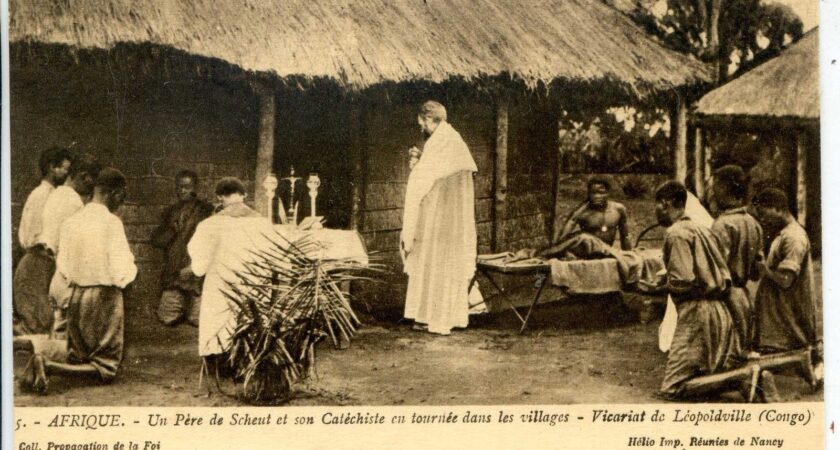Our story begins at the Berlin Conference in 1884, where a group of World Leaders (which actually means European Leaders) met with the purpose of dividing up their new colonial enterprise called Africa. The Empires of Britain, France, Germany, Portugal, and the other western nations present, decided that each Country represented at the conference would receive a delicious slice of the African cake – on one condition. The Colonial administrator would be obliged to ‘civilise’ the natives, by introducing them to Christianity and by establishing an efficient system of commercial trade throughout the Continent.
Enter King Leopold
The Belgian Monarch, King Leopold II, successfully lobbied for the large, resource rich area of the Congo basin. In fact, he convinced the other members at the conference that he was such a committed philanthropist, that they took the unprecedented step of giving the Congo territory, not to Belgium, but to King Leopold himself, as his own personal property.
In reality, what followed were some of the 19th century’s most appalling acts of inhumanity – all in the pursuit of revenue. Dubbed the ‘Congo Free State’ by its new owner, the region was abundant in resources like Ivory, Palm Oil, Timber, Minerals, and most significantly, Rubber.

King Leopold ruled his new fiefdom with an iron fist, and brutally exploited both the people and the environment. He tasked his own private gendarmerie, the Force Publique (FP), with carrying out his avaricious agenda.
The Hatchet Men
Created in 1885 by the Belgian Secretary of the Interior – on Leopold’s orders – the FP served as both the Army and the Police, with several thousand black and mixed race soldiers operating under exclusively white officers and NCOs. One of their main roles, was to enforce Leopold’s unrealistically high quotas in the rubber plantations.
Any native workers who fell short of the quotas were regularly whipped, beaten, raped, or had a limb chopped off. The FP were also partial to burning villages down, if a large portion of that village’s population were being uncooperative.
In 1892, the FP began a 2 year battle with a large group of Arab & African Slave Traders, who had moved into the eastern sector of the Congo territory. The FP would emerge victorious, but more than 10,000 Congolese had perished in the conflict, and several cities had been all but destroyed.

Transition to Belgian Government Rule
The violence, combined with imported diseases and several famines, resulted in the deaths of millions. There is no consensus amongst Historians as to the exact number of Congolese who died as a result of King Leopold’s regime, but estimates range from approximately 1 Million to a staggering 20 Million – more than 50% of the native population.
By the start of the 20th century, the Media and the Churches had made the rest of the industrialised world aware of the humanitarian disaster in the Congo. As a result, the International community pressured the Belgian Government to take control of the Congo away from Leopold. Which they did, reluctantly, in 1908.
From now on, the Congo Free State would be known as the Belgian Congo. King Leopold never visited his private colony, nor did he ever face justice for his crimes. He died in Brussels, in December 1909, at the age of 74.
When the Belgian Government took over operations, they divided the country into separate administrative divisions, with each specialising in a particular commercial activity. Each new division had its own Governor, who reported to the Governor General stationed in the city of Boma. The Congo did become wealthier and more modernised as a result. However, whilst life was a bit better for the locals than it was under Leopold, it still wasn’t good.

Independence
After almost a century of Colonial rule, a radical independence movement swept over the country after the Second World War. Following a national vote in 1960, the Republic of the Congo was born. Also known as Congo-Leopoldville, the new sovereign nation had a President, a Prime Minister and a National Parliament. In 1964, the name was officially changed to the Democratic Republic of the Congo.
The small nation to the northwest of the Democratic Republic of the Congo – which also bares the name Congo – was formerly part of the French colony of Equatorial Africa. It became (and still is) The Republic of the Congo, on the 28th of November, 1958. Also known as Congo-Brazzaville, neither King Leopold nor Belgium ever had control of this small homonymous nation.
The Democratic Republic of the Congo became a dictatorship in 1965, after a successful coup by Mobutu Sese Seko. President Mobutu officially changed the country’s name to Zaire, but when he was overthrown in 1997, the name was changed back again. For the next two decades, the Democratic Republic of the Congo suffered from civil conflicts, corruption and widespread human rights abuses.
The first peaceful transfer of power since independence, took place in 2018. Unfortunately, at the time of writing, there is still much violence and poverty in what is possibly, the World’s most resource rich nation.


